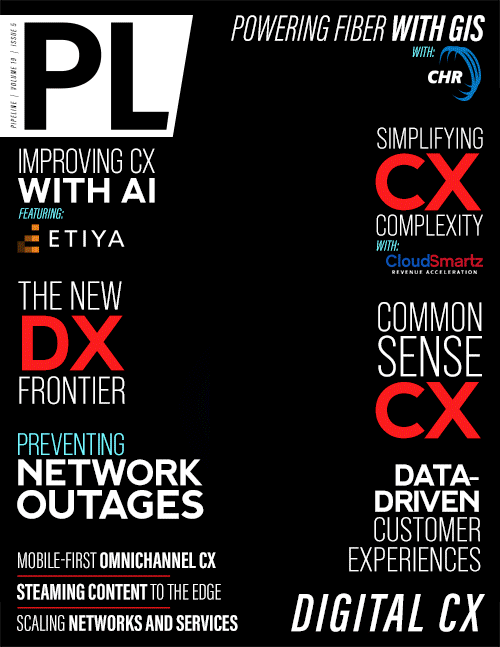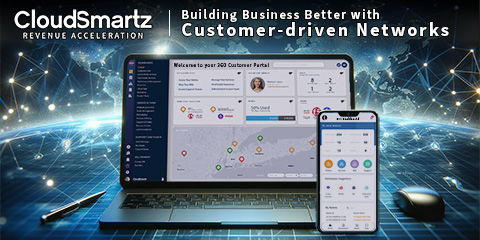Simplifying CX Complexity
for Revenue Acceleration
 Customer service isn’t a new concept, but in the digital age the concept—and perhaps the very definition—of the customer experience has changed dramatically. For starters, the customer has
changed. Today, customers are so dependent on connectivity, it’s become integral and paramount to living their lives. Even a small service interruption can cost them, and you, dearly.
Today’s customers also have a multitude of choices. They can churn with a quick Internet search and few clicks in a mobile app, leading to revenue loss. And in some poor CX examples, churn in
mass.
Customer service isn’t a new concept, but in the digital age the concept—and perhaps the very definition—of the customer experience has changed dramatically. For starters, the customer has
changed. Today, customers are so dependent on connectivity, it’s become integral and paramount to living their lives. Even a small service interruption can cost them, and you, dearly.
Today’s customers also have a multitude of choices. They can churn with a quick Internet search and few clicks in a mobile app, leading to revenue loss. And in some poor CX examples, churn in
mass.
To complicate things further, the definition and dynamics of the customer have changed. For those offering CX solutions, the customer is the Communications Service Provider (CSP). Within the CSP, there are multiple internal customers, such as Customer Service, Finance, Sales and Network Operation departments. CSPs also have third-party partners and entire ecosystems that need to be managed, and served. Then CSPs have their end-customers, which can be a combination of residential and enterprise customers. Enterprise customers have their own internal customers and other end customers to serve. This interconnected and multidimensional spiral of customer relationships increases the complexity and raises the stakes significantly, with a singular issue creating a cascading impact to CX.
The challenge CSPs face is that the customer journey has become increasingly complex, with a proliferation of options. Today it’s about delivering on what a multitude of providers’ end customers want—including enterprise end customers, internal customers, and partners. Gaps in system integration and explosive growth in data volume mean CSPs struggle with a bevy of obstacles, from swivel chair management to managing access to multiple systems, which ultimately decelerates service delivery and slows revenue.
Web Links
- CloudSmartz Company Website
- CloudSmartz Video Showcase
-
Schedule an exploratory call with
CloudSmartz
About CloudSmartz
CloudSmartz delivers the industry’s leading digital marketplace and intelligent digital customer experience platform, Acumen360™ to accelerate revenue for Communications Service
Providers (CSPs). Acumen360 drives value creation and immediate financial improvements by unlocking customer software-centric automation – optimizing existing O/BSS investments.
CloudSmartz helps CSPs transform into digital-first service providers by optimizing business intelligence, digitizing operations, and generating revenue opportunities through a
unified service experience. Encompassing over a quarter-century of telecom and software-industry experience, CloudSmartz has been recognized by Inc. magazine as one of America’s
Fastest-Growing Privately-held Companies for five consecutive years. For more information, visit https://cloudsmartz.com, follow CloudSmartz on LinkedIn.
Another key challenge of delivering superior CX is that it involves many different and disparate systems, such as BSS, CPQ, CRM, ERP, OSS, product catalog and more. Add in disparate point
solutions within each of these areas, and things get even more complex. Point solutions offer focused functionality, but with lags and gaps in data, analytics, and integration, they don’t provide
the necessary operational visibility or KPI tracking. Managing, inputting, and analyzing third-party and multi-source data decelerates business opportunities, adds additional complexity, and
opens the door to manual errors that create spiraling CX issues.
To complicate things further, customers don’t care about the complexity. Their expectations remain the same. Customers want an easy and enjoyable experience. They want to easily buy the services they want, where and when they want them, and they want them to work well. They want choices and value from you and your partners. If issues arise, they want them quickly, and ideally proactively, addressed and rectified.
Pipeline recently had an opportunity to discuss the current state of CX complexity with CloudSmartz’ Chief Marketing Officer Matthew Ray and co-founder and chief technical officer Manjeet Dhariwal. CloudSmartz was the winner of the 2022 Pipeline




















